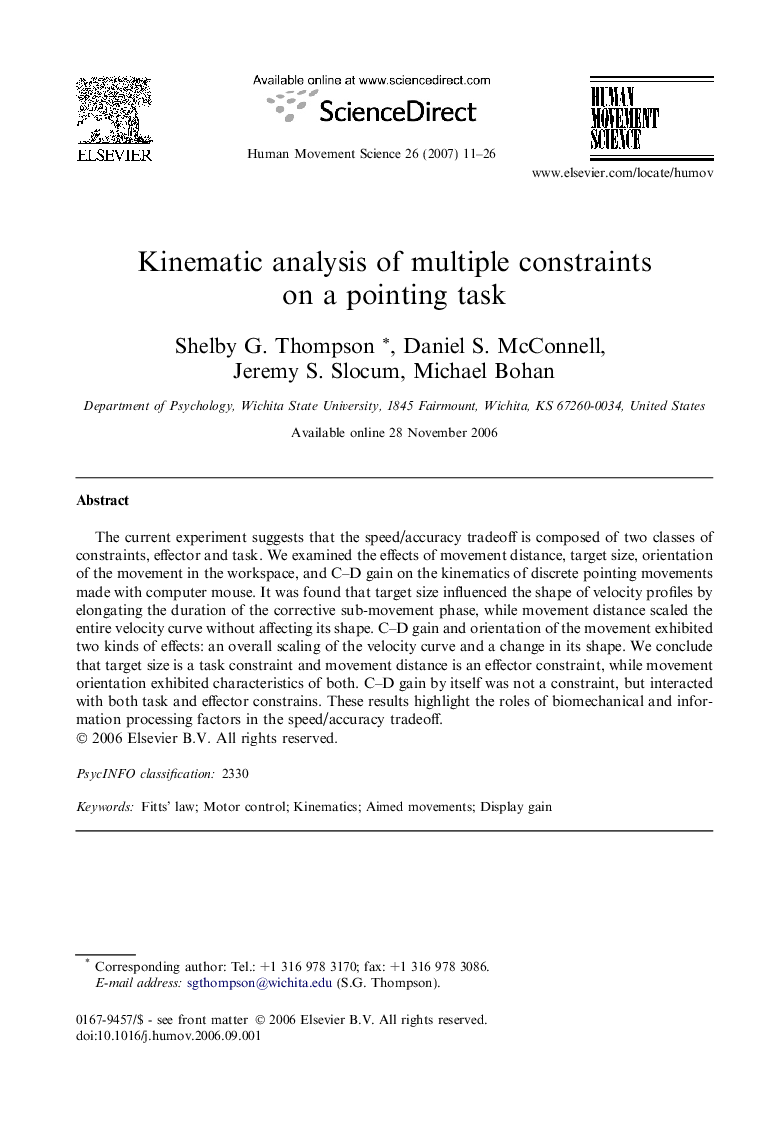| Article ID | Journal | Published Year | Pages | File Type |
|---|---|---|---|---|
| 928863 | Human Movement Science | 2007 | 16 Pages |
The current experiment suggests that the speed/accuracy tradeoff is composed of two classes of constraints, effector and task. We examined the effects of movement distance, target size, orientation of the movement in the workspace, and C–D gain on the kinematics of discrete pointing movements made with computer mouse. It was found that target size influenced the shape of velocity profiles by elongating the duration of the corrective sub-movement phase, while movement distance scaled the entire velocity curve without affecting its shape. C–D gain and orientation of the movement exhibited two kinds of effects: an overall scaling of the velocity curve and a change in its shape. We conclude that target size is a task constraint and movement distance is an effector constraint, while movement orientation exhibited characteristics of both. C–D gain by itself was not a constraint, but interacted with both task and effector constrains. These results highlight the roles of biomechanical and information processing factors in the speed/accuracy tradeoff.
